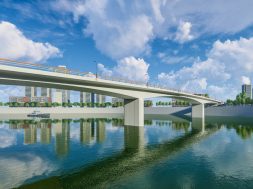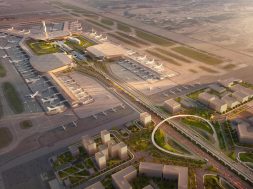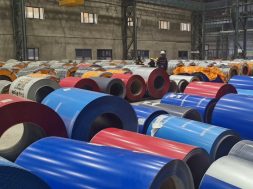Architects: the father figures of project
Architects: the father figures of project
“Architects have to be leaders in true sense as they are the ones who can bring the vitality and interest of achieving a good design,” says Vibhor Mukul Singh, Architect and Planner, Design Partner, UPA – Designers’ Alcove
With infrastructure and real estate sector growing across the nation, how do you see the scope for architects?It’s high time that we, as architects and planners, take up a wider role than just limiting ourselves to design of buildings and spaces. With the kind of pace at which the real estate industry is booming, the infrastructure is being developed, the need of the hour is to go for specialisations in various sub-sectors of the industry and adapt a R&D based approach. I admit that it takes a little longer to see the results of such an approach; but nonetheless, the long-term results are far more beneficial for our urban centres as a whole. We must understand that, to address any issues related to the urban development and infrastructural planning, the solutions cannot be imported or generalised. Each city, or an urban centre for that matter, has specific roots to its problems. And so, the solutions also have to be specific. Hence, an R&D approach is the key. And this is where the role of today’s architects and planners becomes wider. In addition to this, in the present scenario where our energy resources are getting exhausted sooner than comprehended, we also have an additional responsibility of adapting and popularising a “sustainable development approach”.
Recent construction-related accidents have raised concern over the quality of construction; what is your take in this?There is no denying that in the recent years, we have noticed some unfortunate incidents of building failures. But what you are talking about is primarily a structural and services failure. Although, these are the most serious of all types of failures as they are directly accountable to loss of human lives and properties. The problem is that the construction industry is such a huge one, especially when we talk about projects with thousands of square footage of built-up, that quality control becomes a nightmare. Truth is that even the most well-known PMC companies in the industry find it hard and struggle to maintain the quality of construction. And the reason is that there are hundreds of agencies involved in the process of construction. The more the number of players, the more difficulties are the quality check and co-ordination. But this certainly can’t be the excuse for letting these accidents happen. We have to be more conscious of what we are designing, and if our construction teams or contractors are capable of executing them. At times, the ambitious designs of the architects take over the prevailing execution capacity of the contractors. Moreover, the bidding and tendering process are also quite objective. We need to have that extra sensitive evaluation at these levels.
How can we curtail such mishaps?The solution to this is to break down our general PMC teams into more specialised four-five sub-teams that can look into the specifics of each service more precisely, be it structural, MEP, fire fighting, or others. We need specialised professionals to join our quality management squads at all levels, so as to ensure that what is promised and required is delivered. A better sense of responsibility toward the project comes with a deeper understanding and knowledge of one’s own field or specialisation. Also, it can be of great significance to organise “workshops” at regular intervals during the construction phases of the project where the designers, consultants and contractors can work together toward a common goal of achieving good quality of design and construction. Look at the European model of construction process. They emphasize on teamwork. These workshops can be extremely useful in putting across the architect’s design to their consultants and contractors. And this should be done stage wise. Presently, we work on more of a lump sum basis, where the tender drawings are handed over to the contractor in the beginning. As the project progresses, the interest is bound to get lost. We need to have the overall design and services resolved in the first place, and then address the specifics of the project at the right stage.
Are there any scopes for architects in improving the situations?Architects are the father figures of the project. Certainly, they play the most crucial roles in the project in every term and sense. They have to be leaders in the true sense as they are the ones who can bring in the vitality and interest of achieving a good design. We, as architects, need to have a good communication level with all the agencies, be it the consultants, contractors or vendors and suppliers to ensure the best outcomes. Precise and continuing flow of information is very important. All the agencies must understand and acknowledge that a synchronised action plan is the only key to a successful project.
The construction at large is obsessed with the bureaucratic hurdles, your comments.We all have faced this problem at some stage or the other. Our bureaucratic process is unfortunately not so user friendly. A small metaphoric example is the security checks at the airport. If you look at any of the airports, even the busiest ones, in the west, they also have a highly sensitive security check system. But their process is never intended to cause inconvenience to the passengers. Here, on the other hand, we tend to handle the same issue with such disregard and callousness. I’m not denying that all the projects that come for approval from the competent authorities do need to undergo a proper scrutiny, but the codes also need to be revisited in certain areas where there is more clarity required, and the bureaucratic process should be made simpler. As an architect, I’d rather prefer to spend more time on my drawing board and designs, rather than reading between the lines of the codes and convincing the authorities.
In Maharashtra, the Practising Engineers Architects and Town Planners Association (PEATA) planned to approach the chief minister to address bureaucratic challenges faced by the industry. How will it benefit architects?Honestly, this is something that we should have pooled in to do long time back. Our projects suffer severe delays at times due to the cumbersome bureaucratic process that the clients and the architects have to go through. Although, there is no denying that a proper scrutiny of the project proposals is very important, but also true is the fact that there are many ways in which the process can be made simpler without compromising on the required checks. At the moment, many of the building codes also have not been described very clearly, especially the ones related to fire safety. Multiple approvals are always more difficult to get done. I think we really need to look at how the process of bureaucracy can be simplified, time frames to obtain the required approvals be reduced, and the projects can be floated without the architects or clients being challenged due to not-so-clear clauses in the codes.
Recently Haryana Government has decided not to renew licences of architects who don’t possess degree in architecture; how do you see its impact?This is a very important step that the government could have taken to check the incompetent figures from entering into the profession, thereby curtailing the mishaps and project failures that we were just talking about. You hear so much about the terms “sustainability and sustainable development”. We may know what it means, but we really know how do we achieve it? Architecture and construction for that matter is a huge industry. It has a lot of tangible and intangible characters. These can be protected only by having a proper system where people acknowledge the need to approach the professionals with proper qualifications. Only then we can think of working toward a sustainable community and economy.What are the new developments happening in Indian architecture?Nowadays, the sense of “verticalism” seems to have taken over the Indian architecture. Just like any other form of art, be it music which had its own eras (vocals, classics, rock, pop, hip-hop, and now new age), or art (art nouveau, renaissance, modernism, post modernism, contemporary, etc.), even architecture has had its own phases. What we see now, although can’t be termed as one pure form of style, but one thing that certainly and significantly characterises this period is this vertical development. I personally feel that this verticalism is something that can be extremely critical in the years to come. It will depend on the kind of sensitivity we show in using it, and this will determine whether it turns out to be a boon or a curse. Let me emphasise again that solutions to an architectural or design problem can’t be imported. It has to be devised, depending on the specificity of the projects. Another new wave that seems to be taking over is “green architecture and sustainable development with energy efficient solutions”. This in itself is a huge topic of discussion; but nevertheless, it is extremely crucial in today’s’ times.Brief us about the projects you are working on.At present, we are engaged in a couple of residential, institutional, and mixed-use projects. We are making a biotech university in Baghdad, which is completely based on the concepts of passive energy saving techniques and green roofs as 5th facades. Then we are also engaged in two institutional projects: one, cultural centre for the ladies in Abu Dhabi, which has multiple facilities like sports academy, arts and music academy, spa, restaurants and recreational centre, beach houses and lagoons, etc. and second, primary and secondary schools for Ministry of Education in UAE, a transportation hub in Shenzhen, China and an office tower of 25 floors in Amman, Jordan. Amongst the recently finished projects include two hospitals (60 and 200 beds) and a 35-floor residential apartment with 750 units. In Delhi-NCR, we are working on a mixed use development that includes industrial, commercial, residential, and recreational facilities. Apart from these, we are working on a few residential towers in Delhi and Jaipur
Cookie Consent
We use cookies to personalize your experience. By continuing to visit this website you agree to our Terms & Conditions, Privacy Policy and Cookie Policy.







